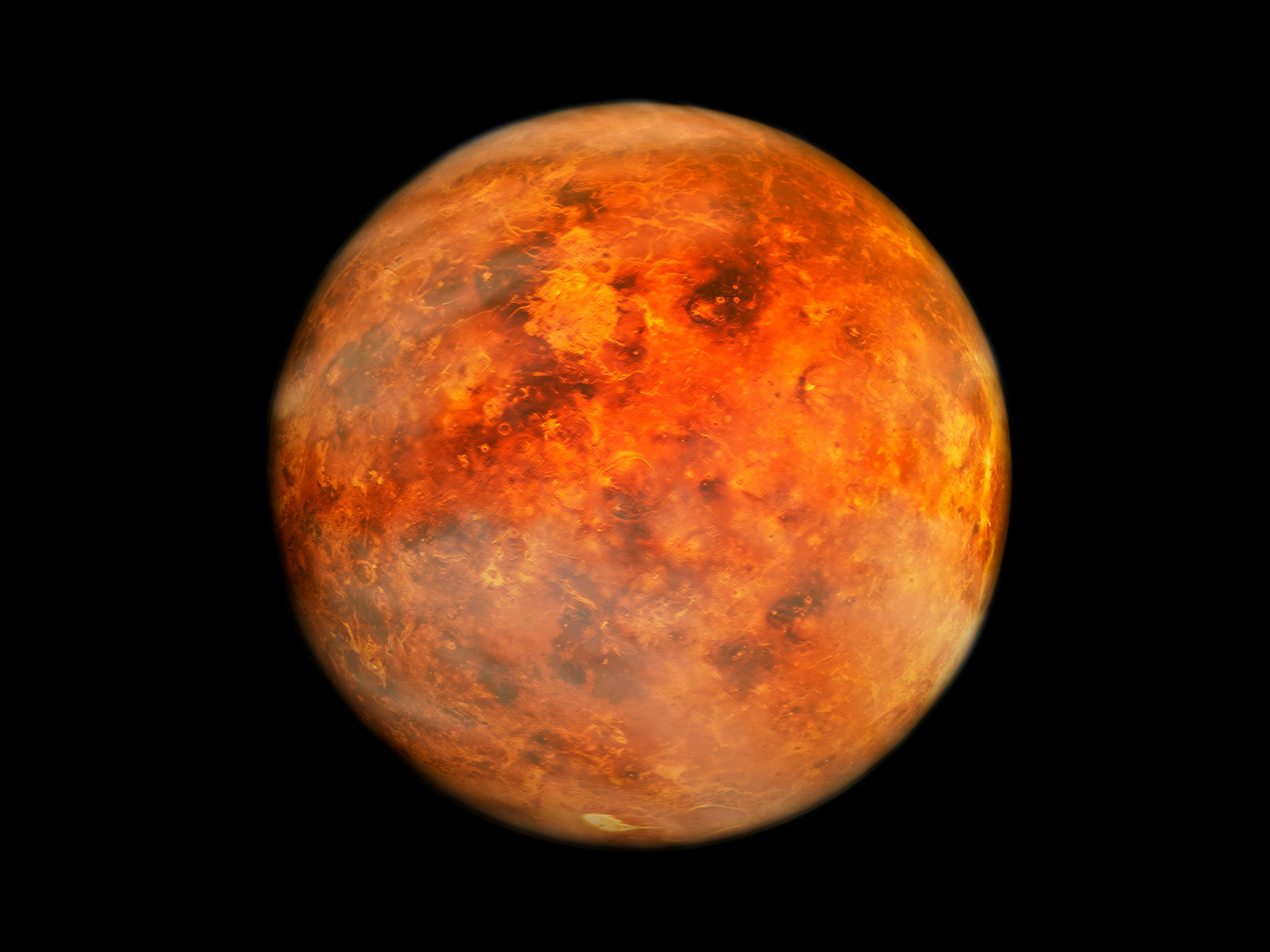
Get in losers, we're going to Venus. On Wednesday, NASA announced two new missions that will explore our sister planet for the first time since 1994. Before the end of the decade, NASA will send two probes to Venus with the goal of mapping the planet and landing on the surface to sample the planet's atmosphere. The missions — part of NASA's Discovery Program, which aims to help us gain a better understanding of our solar system — have been awarded $500 million each and are expected to launch as early as 2028.
Why Venus? Well, why not? It's been nearly three decades since NASA last checked in on the terrestrial planet that shares a similar size, mass, and proximity to the sun as Earth. While it shares many qualities with our planet, the surface of Venus is hot and fiery, and the atmosphere is poisonous to humans, consisting of 96% carbon dioxide. Sending probes to observe and explore the planet will give us a better idea of how it came to form its unique atmosphere and why, despite its similarities to Earth, it doesn't seem to have developed into a host for life.
"It is astounding how little we know about Venus, but the combined results of these missions will tell us about the planet from the clouds in its sky through the volcanoes on its surface all the way down to its very core," Tom Wagner, NASA's Discovery Program scientist, said in a statement. "It will be as if we have rediscovered the planet."
While we won't know what the probes will find until they launch later this decade, we already know that NASA has mastered the art of the acronym. The first planned mission is known as Deep Atmosphere Venus Investigation of Noble gases, Chemistry, and Imaging Plus — or DAVINCI+ for short. This spherical probe, created by scientists and engineers at NASA's Goddard Space Flight Center, will drop into Venus's atmosphere and record what it finds in each layer. DAVINCI+ will be seeking out noble gases, which would provide insight into the history of chemical and geological processes that helped to form the planet's atmosphere. It'll also keep its eyes out for chemical remnants that may help determine if Venus ever had water on its surface.
Not to be outdone, NASA's Jet Propulsion Laboratory has its own excellent acronym for its probe: Venus Emissivity, Radio Science, InSAR, Topography, and Spectroscopy, otherwise known as VERITAS. This mission will orbit Venus, charting its surface elevations using radar with the goal of ultimately creating a 3-D reconstruction of the planet's topography. VERITAS should help to determine if there are active volcanos or shifting tectonic plates on Venus, which would indicate that the planet is still relatively young geologically and could be worth further exploration.
It'll be years before the probes are sent off to Venus, with launches planned sometime between 2028 and 2030, and it'll be years more still before the missions actually reach the planet that is located more than 150 million miles from us. But these multi-year missions will give us insight into hundreds of millions of years' worth of history, illuminating how Venus came to be — and what may have been there long before we ever knew we shared a solar system.







